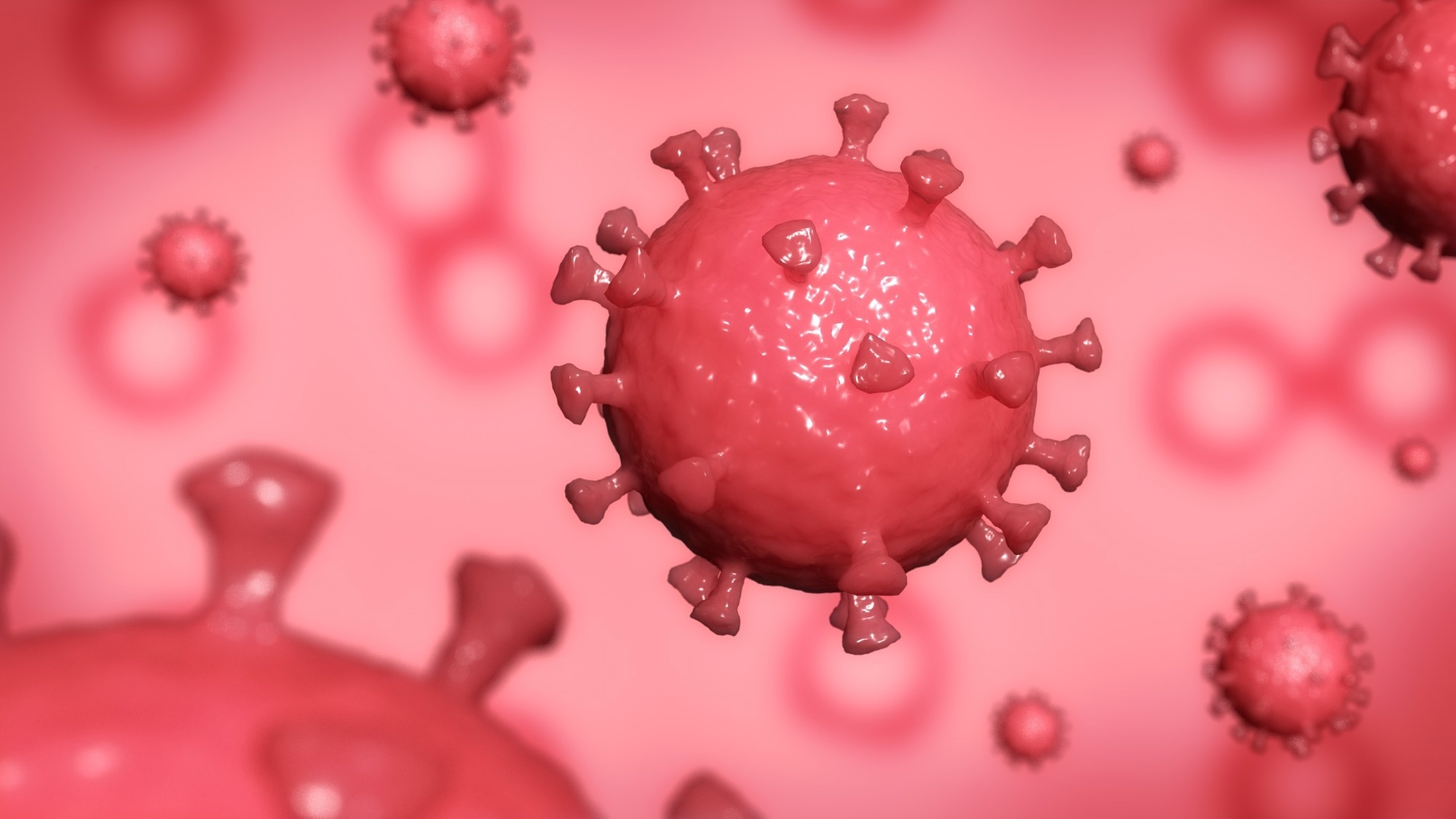In a recent study posted to the bioRxiv* preprint server, researchers discuss the use of endo-lysosome-targeted nanoparticles for delivering antiviral therapy to treat coronavirus infections.
 Study: Endo-lysosome-targeted nanoparticle delivery of antiviral therapy for coronavirus infections. Image Credit: Broadcast Media / Shutterstock.com
Study: Endo-lysosome-targeted nanoparticle delivery of antiviral therapy for coronavirus infections. Image Credit: Broadcast Media / Shutterstock.com

 *Important notice: bioRxiv publishes preliminary scientific reports that are not peer-reviewed and, therefore, should not be regarded as conclusive, guide clinical practice/health-related behavior, or treated as established information.
*Important notice: bioRxiv publishes preliminary scientific reports that are not peer-reviewed and, therefore, should not be regarded as conclusive, guide clinical practice/health-related behavior, or treated as established information.
Treating COVID-19
Several clinically approved drugs were repurposed to treat coronavirus disease 2019 (COVID-19) patients alongside vaccine development. Antimalarial agents, including protease inhibitors like lopinavir/ritonavir (LPV/RTV), chloroquine/hydroxychloroquine (CQ/HCQ), and viral transcription inhibitors like remdesivir (RDV), are among some of the treatments that have been used to treat COVID-19.
Clinical trials of CQ/HCQ and LPV/RTV for COVID-19 patients did not show significant clinical benefits as compared to standard care, despite promising in vitro reports. Therefore, a potent antiviral therapy for coronaviruses that impacts the pulmonary system locally is crucial to address this unmet need.
About the study
In the present study, researchers describe nanoparticles containing chloroquine, sulfadoxine, mefloquine (MFQ), or nitazoxanide.
The team generated a method to create spherical nanoparticles (NPs) that are approximately 100 nanometers (nm) in size. Polymeric nanoparticles of this size can be delivered through inhalation and taken up through endocytosis.
Poly(glycerol monostearate-co-εcaprolactone) (PGC-C18) was chosen due to its biocompatible degradation products, which include glycerol, stearate, carbon dioxide, and 6-hydroxyhexanoic acid. Drug-loaded nanoparticles were created using the solvent evaporation method with sodium dodecyl sulfate as a surfactant. The resulting nanoparticles were spherical and contained a PGC-C18 polymer core that encapsulated a hydrophobic drug payload.
The team assessed NP cytotoxicity in vitro in human lung fibroblast (HFL-1), Calu-3, and Vero E6, cell lines over 24 hours using a tetrazolium-based MTS assay. Two cell lines were used to evaluate the effectiveness of MFQ-NP against the severe acute respiratory syndrome coronavirus 2 (SARS-CoV-2).
Results
Spherical nanoparticles with a diameter of approximately 100 nm, were identified through scanning electron microscopy (SEM) analysis of their structure and size. Quantitative analysis performed with dynamic light scattering (DLS) confirmed the size range of 100-150 nm.
The surface charge of NP, as determined by DLS, was negative and had a zeta potential of -30 mV or less in both unloaded and drug-loaded NPs, thereby providing stability to the NPs. Hydrophobic PGC-C18 prefers to encapsulate hydrophobic elements, with CQ and MQ more effectively encapsulated as compared to less hydrophobic compounds like nitazoxanide and sulfadoxine.
MFQ-NPs exhibit half-maximal inhibitory concentration (IC50) values of 42 μg/mL for HFL-1, 54 μg/mL for Calu-3, and 135 μg/mL for Vero E6 cells. MFQ-NP treatments exhibit decreased cytotoxicity in Calu-3 and Vero E6 cells when administered for 72 hours as compared to the 24-hour time points.
At 72 hours, Calu-3 and Vero E6 cells had MFQ-NP IC50 values of almost 206 μg/mL and 269 μg/mL, respectively. This corresponded to approximately 35.8 µM and 46.8 µM of loaded MFQ.
The assay revealed IC50 values of 18.8 μM for Calu-3 and 19.6 μM for Vero E6 cells in regard to MFQ in DMSO. These data suggest that MFQ-NPs reduce MFQ cytotoxicity by lowering MFQ release into the cytosol in comparison to the “bolus” kinetics associated with free drug dosing.
Remdesivir effectively inhibited SARS-CoV-2 infection in Vero cells. However, empty PGC-NPs do not show any effect, while MFQ-NPs only reduce infection at a concentration of 100 μg/mL.
Free MFQ at 20 μM reduced infection without causing significant toxicity. MFQ-NP treatment at 100 μg/mL in Calu-3 cells significantly lowered the proportion of SARS-CoV-2 positive cells with strong inhibition observed for free MFQ at 20 μM.
Preincubation with empty PGC-NPs exhibits a minor but noteworthy inhibitory impact on Omicron infection within the range of 25 to 100 μg/mL. At concentrations of 12.5 and 100 μg/mL, MFQ-NPs effectively hinder Omicron infection.
While unloaded-PGC-NPs do not hinder the replication of SARS-CoV-2 WT-WA1, they have a notable impact on Calu-3 cells infected with the Omicron variant. The antiviral effects of MFQ-NPs were tested against two SARS-CoV-2 variants.
The ancestral WT-WA1 variant was only slightly inhibited by MFQ-NPs, while the Omicron variant was significantly reduced at certain concentrations. These results were comparable to those noted for free MFQ at specific concentrations, which suggests that MFQ-NPs reduce both viral uptake and replication.
Conclusions
The study findings describe a novel polymeric nanoparticle system comprised of PGC-C18 and physically encapsulated small hydrophobic molecules with antiviral properties. The researchers believe that MFQ-NPs could be developed and tested for their effectiveness in preventing or treating various respiratory coronaviruses and further in vivo research is needed to explore this potential.
usechatgpt init success

 *Important notice: bioRxiv publishes preliminary scientific reports that are not peer-reviewed and, therefore, should not be regarded as conclusive, guide clinical practice/health-related behavior, or treated as established information.
*Important notice: bioRxiv publishes preliminary scientific reports that are not peer-reviewed and, therefore, should not be regarded as conclusive, guide clinical practice/health-related behavior, or treated as established information.
Journal reference:
- Preliminary scientific report.
Petcherski, A., Tingley, B., Martin, A., et al. (2023). Endo-lysosome-targeted nanoparticle delivery of antiviral therapy for coronavirus infections. bioRxiv. doi:10.1101/2023.05.08.539898